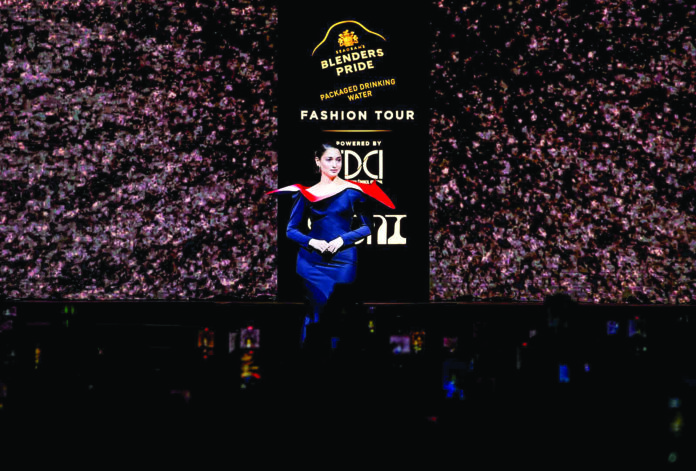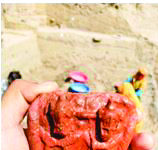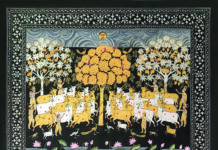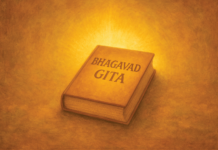The Sunday Guardian got chatting with actor Tamannaah Bhatia ahead of her ramp walk recently at a fashion show.
Q: Tell us a bit about how you feel about your association with Blenders Pride Fashion Tour for this special show.
A: Fashion has almost become a way for me to express my deepest feelings—how I perceive myself, my ideas about society, and how I aspire to be. It has always been a powerful medium for my self-expression and having that outlet has been incredibly empowering. Beyond being a performer and actor for the past 20 years, being part of Blenders Pride Fashion Tour provides me with a fantastic platform. It is a place that organically attracts me. It looks like we have gravitated towards each other. More than anything, it is a celebration of so many incredible creative minds who continuously shape globally relevant trends while remaining deeply rooted in the superior craftsmanship we possess—something that sets us apart from many other countries. It’s where the virtue of how long we have been doing this and the kind of variety of karigari we have in our country. It’s an absolute high and pleasure to be a part of Blenders Pride Fashion Tour.
Q: How is the collaboration with Bloni & designer Akshat Bansal going to be?
A: It’s been a very exciting journey because we’ve been trying to put up a very futuristic and very powerful show. It’s wonderful that I get to do it on Women’s Day. That’s very special for me. And the fact that Bloni is going to channel something that feels it is somewhere giving a light upon what, when we say what’s a strong woman, he’s really kind of put that into his creations. It’s wonderful and symbolic that we all are doing this on the stage of Blenders Pride Fashion Tour.
Q: Personally, what’s your routine before stepping onto a ramp for such a show?
A: A good technical rehearsal would be the first thing. I love ensuring I’ve tried on my outfits and am extremely comfortable. Most importantly, I ensure I have hydrated myself because you often don’t get the opportunity to hydrate yourself while you’re going through the entire show. I don’t like to be in my mind. I interact with people backstage because they’re also going through the same emotion that I’m going through, probably be going on stage. It grounds me to a certain level.
Q: What do you believe defines Tamannah’s style?
A: I would define my style as a balance between structure and fluidity. It’s a reflection of my personality—one side of me enjoys sharp, well-defined silhouettes, while the other embraces movement and effortlessness. My fashion choices are deeply personal, and I gravitate towards pieces that feel like a natural extension of myself. Whether it’s a tailored ensemble or a free-flowing garment, my style is always about striking that perfect harmony between the two
Q: Do you believe Indian fashion is now going truly global?
A: Jewelry has always fascinated me, and the more I research and learn about it, the more I realize how deeply Indian craftsmanship has influenced global fashion. Many of the top international brands we admire today have, at some point, drawn inspiration from India—whether in design, textiles, or intricate craftsmanship. The legacy of Indian karigari, whether in jewelry or clothing, is simply unparalleled.
This influence isn’t new; Indian artistry has been shaping global fashion for years. However, what’s exciting now is the growing global recognition of India’s rich heritage and craftsmanship. It’s not just within fashion—across various industries, there is an increased curiosity and appreciation for what India has to offer. The world is looking toward India, and we’re in a moment where our design sensibilities and traditional techniques are receiving the spotlight they’ve always deserved.
Q: What’s one style tip you’d like to give to youth who look up to you as a style icon?
A: Style is a constant reflection of who you are, regardless of mood, occasion, or the ever-changing nature of daily life. Of course, we dress differently for different settings—a work meeting, a party, or a family wedding all call for distinct outfits. But beneath these variations, there’s always an underlying essence that defines your style.
The key is to identify that common thread—the recurring element that naturally finds its way into everything you wear. For some, it might be metallic accents, whether in a casual daytime look or an evening ensemble. Others may instinctively gravitate toward florals, incorporating them into both festive and everyday outfits.
Even in the smallest details, your personal style reveals itself. When you’re in a rush, what’s your go-to? Is it a winged liner you can perfect in seconds? A particular silhouette or color you always reach for? These unconscious choices speak volumes about your innate aesthetic.
True style isn’t just about trends—it’s about recognizing and embracing what consistently feels like you.
Q: Your song ‘Aaj Ki Raat’ became a huge hit, how did you design your look in that song?
A: What I loved about the song was that it wasn’t just about the music—it was about the character dancing within it. When that integration happens naturally, it gives us so much more depth to create a look that feels authentic. The character had an Arabic touch to her, but she also carried a certain grace—she was poised, elegant, and refined. That essence wasn’t just limited to the song; it was established from the scene itself. It wasn’t about just showing up in a costume; the styling was an extension of her personality.
Since it was a night shoot, they wanted a rich, striking color on me, and I’ve always loved vibrant hues. We chose a deep bottle green, which looked stunning under the lights. The blouse, designed by Sheetal, had intricate kari work—a traditional Indian embroidery that resembles the shape of a paan (betel leaf), which is also seen in mehendi designs. The blouse was beautifully crafted, with the kari motifs positioned on the left and right, almost three-dimensional in effect. If you look closely, you’ll see how the embroidery pops out from the fabric rather than just sitting flat against the body.
The overall styling was captivating—my outfit had a metallic, almost warrior-like appeal, and that theme carried through to the background dancers as well. The male dancers wore metallic chest pieces, which added to the visual impact. The entire look was minimal in effort but maximal in effect—there was a strong clarity in design, and that made it all the more powerful.








